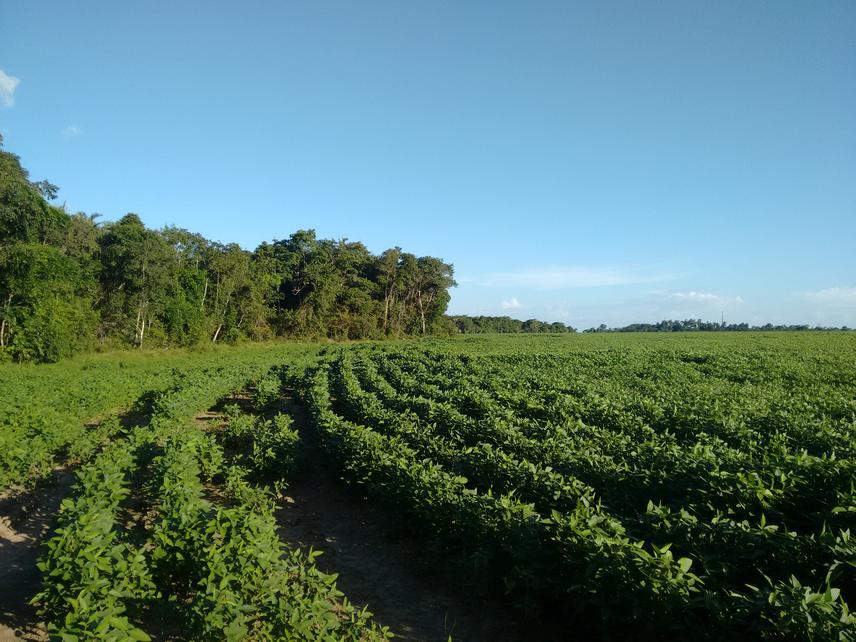William Douglas de Carvalho
Our proposal will be the first to quantify the effect on bat fauna of replacing natural vegetation with commercial plantations in a Brazilian Amazonian savannah. Our aims are to: (i) compare functional diversity, richness and abundance of bats between areas of savannah, native forest patches and commercial plantations; (ii) evaluate how the substitution of native vegetation by commercial plantations affects bat fauna; and (iii) determine which bat species are most affected by this substitution. Beyond these, we will also (iv) hold meetings and workshops with land-owners, rural workers and school groups to discuss the importance of bat conservation.

Soybean plantation planted where savanna vegetation occurs. To the left we see the vegetation of the forest patches.
The Cerrado of Amapá is currently the most threatened complex of Amazonian savannahs, largely due to the rapid and on-going advance of commercial plantations, particularly of soybeans and eucalyptus. Indeed, the area is considered to be the “last frontier” of soy in Brazil. Our concern about the effects of this advance on the conservation value and ecosystem functioning of these unique habitats has lead us to launch this project, where we will be working to understand the effects of these plantations on bat fauna, and the role of bats as providers of ecosystem services in different productive landscapes of the region.
By collecting data on the abundance of different species of bats in native savannah and forest vegetation, and in nearby plantations of soybeans and eucalyptus, we will be able to indicate the influence of habitat type and habitat structure on the functional diversity, richness and abundance of bats, allowing for the identification of species- and ensemble-level habitat associations and to identify which species are more sensitive to environmental disturbance. Furthermore, throughout the project we will be working closely with different stakeholders, including land-owners, rural workers and school groups to discuss the importance of bat conservation and to explore the potential for community-based conservation initiatives, such as the use of “bat houses” in productive landscapes, which can be positive both for conservation and for production as bats are natural insect pest controllers. This work with the community is particularly important as Brazil has a history of conflicts over bats, mainly because people often think that all bats are hematophagous, that they carry disease, and thus that they pose risks to human health.
Header: Mist net used to capture the bats in the foreground and an individual of Artibeus planirostris being manipulated by William in the background.